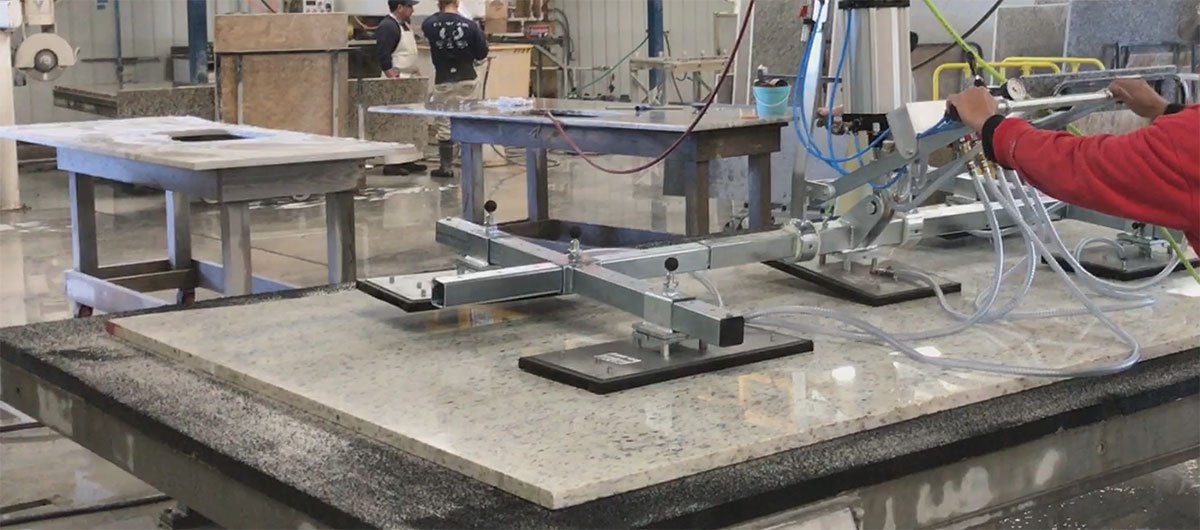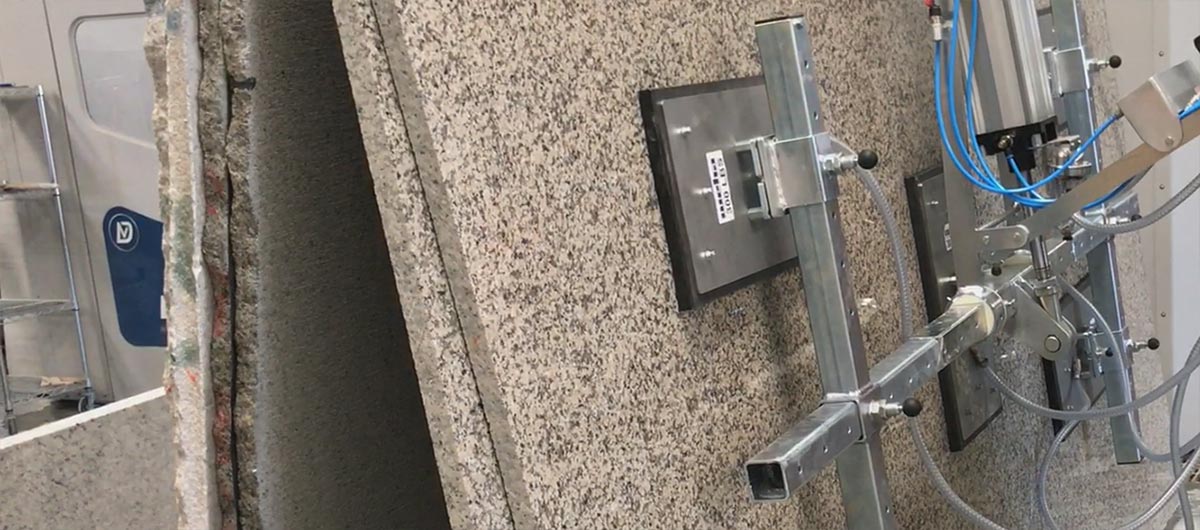Stone Fabrication Safety Tips
Safety in the work environment seems like an obvious shop priority. Yet, each year there are still accidents that cause injuries and even fatalities. What can be done to decrease the number of injuries in the work environment? This article will consider some practical stone fabrication safety tips fabricators can use to work toward reducing injury.

Safety In the Work Environment
It goes without saying that granite is very heavy. And that is why it is so important to think in terms of safety. How heavy is a granite slab? One source gave the following weights for granite slabs depending on thickness:
- 3/4″ (20mm) Slab = 12.8 pounds per square foot
- 1 1/4″ (30mm) Slab = 18 pounds per square foot
If we do the math based on some averages we can put that into perspective. According to one source, the average counter top area comes out to be 30 linear feet. Barring any mathematical errors, that means that a 3/4″ granite slab can weight around 800 pounds. And based on the weight per square foot mentioned above a 1 1/4″ granite slab of 30 linear feet would weight over 1/2 ton. Clearly then, handling material that weighs that much requires a safe work environment.
Considering how much these natural stone slabs weigh, one begins to see that handling these sheets is a key to safety. Let’s consider two common work environments and look at some stone fabrication safety tips in each of these environments.
Fabrication Shop
The first of the work environments we will look at is the fabrication shop. What factors contribute to a safe work environment in the shop? This is not an exhaustive list, but it demonstrates the mindset that fabricators need to have in the shop.
- Equipment Maintenance and Replacement
- Regular inspection of vacuum lifter pads and hydraulic cylinders.
- Keeping hoists lubricated and clean.
- Transport carts in good condition or replaced when wear or damage is found.
- Replace worn consumables like blades and polishing pads.
- Keep pads and blades on hand so that circumstances do not influence longer use of worn consumables.
- Personal Protection
- Wearing proper safety attire (safety glasses, dust masks if a dry shop, and ear plugs) while working in the shop.
- Adjust shop operations when visitors are present.
Simply stated, shop safety is a way of thinking and following through with safe shop operation. What about safety on the job site?
Job Site Safety
Another work environment in which safety is necessary is the job site. Job sites not only have specific safety requirements, they also vary from one site to the next. Being aware of what might come up and preparing for those potential problems is key. Additionally, having enough workers on the job site is imperative. In fact, the number of workers you choose to have on a given job site will likely fluctuate. Getting the slab into the home from the truck will not take the same tools or the same number of workers on every job site. Being prepared will give you a great deal of leverage in working safely.

Delegate Responsibility
Besides the physical environment, there are other aspects to consider when it comes to working safely. How your shop and job site workers carry out the work is also important. Putting specific workers in charge of each task will keep them focused. They will also become more proficient at the task they are assigned. As workers develop and progress at their given assignment they will likely feel a sense of ownership and become a “specialist” at that task.
Training
All of the stone fabrication safety tips mentioned above are good however, a practice develops over time. This means that your company’s atmosphere must keep safe work practices in front of all employees. This is done through regular training sessions. Your training, meetings, seminars, and sessions should be regular and have a primary theme.
Before giving a responsibility, be sure that your employee has been given training on how to operate the equipment or carry out the task. Offer training to whom you have given responsibility so they continue to progress. For example, regularly instruct a worker responsible for one task on how another task is performed. This will help to prepare the individual to take on more responsibility in the future.
In conclusion, stone fabrication safety is a way of thinking. It involves everyone in the company. Each worker regularly makes an effort to do what he or she can to contribute to a safe work space. Whether it is the shop or the job site, everyone present must be thinking safety, working safely, and therefore being safe.
